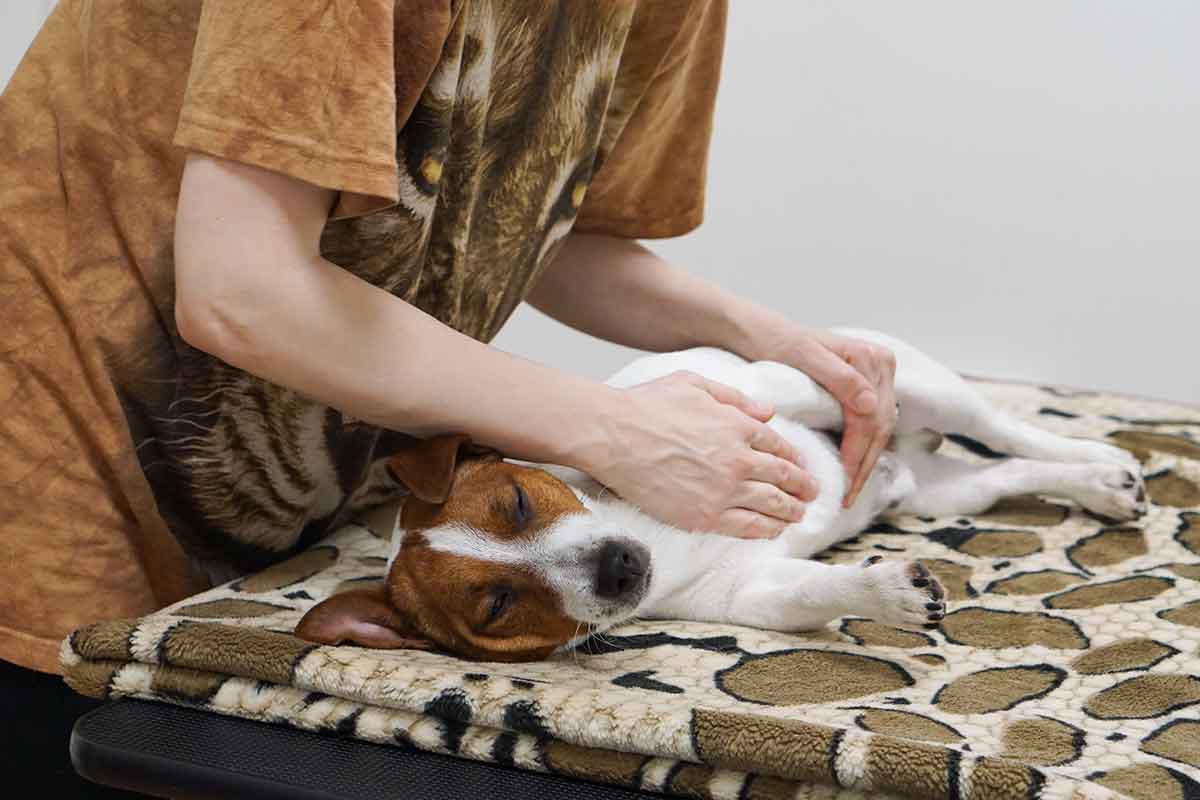If you’ve ever had a massage, you know how relaxing it can be. There’s something about the touch of a massage therapist that can make stress melt away.
Turns out the soothing aspects of massage are not just for humans. Your pet can get relief from stress through massage too.
According to the American Massage Therapy Association, studies have shown that massage therapy helps relieve depression and anxiety by affecting the body’s biochemistry. Researchers at the University of Miami School of Medicine reviewed studies that measured the stress hormone cortisol in participants before and immediately after massage, and found that the therapy lowered levels by up to 53 percent. Massage also increased serotonin and dopamine, which are both neurotransmitters that help reduce depression.
While these studies were performed on humans, it’s safe to assume that massage has the same effect on pets too. After all, our biochemistry is similar.
Whether your pet is a dog or cat, massage can help her cope with stress. Small-animal massage practitioner Carrie Nava, owner of Kneaded Pets in Plano, Texas, says massage therapy can be an excellent tool to help manage stress and anxiety in our four-legged family members. Separation anxiety, chronic illness, aging, rehoming of puppies and older animals, new situations, or changes to existing routines can all cause stress in pets. Our own stress can affect our pets as well.
“Most people fail to realize how observant companion animals, particularly dogs, can be,” Nava says. “When the owner feels stress or tension, animals often pick up on these emotions through body language and facial expressions. This stress is ‘absorbed,’ to a degree, by our pets.”
The good news is that you can perform some simple massage techniques on your pet to help her relax. According to Nava, some of the simplest massage strokes that may be used by owners to alleviate stress are similar to petting.
“The use of long, flowing strokes the length of the animal’s entire body is helpful,” she says. “Specific body parts, such as ears, base of the skull and tail, and even jaws, are particularly good areas of focus when coping with stress, anxiety, and tension.”
Nava says to always use light pressure, as if massaging a child.
You can also opt to take your pet to a professional pet massage therapist. It’s best to choose a therapist who has received training or education through an established school of animal massage.
“Ask how long a therapist has been practicing,” says Nava. “The longer they have been in business, the higher the likelihood that they have experience and knowledge of your particular situation.”
Nava recommends looking for a practitioner who is insured and may belong to one or more massage industry groups. You can also ask your veterinarian for a referral. In fact, Nava says that depending on your state, pet massage therapists may be required to practice only under veterinary supervision.
“You may also want to check references,” she adds. “Most practitioners are willing and able to provide client testimonials or even contact information for current or previous clients.”
This article was reviewed/edited by board-certified veterinary behaviorist Dr. Kenneth Martin and/or veterinary technician specialist in behavior Debbie Martin, LVT.








